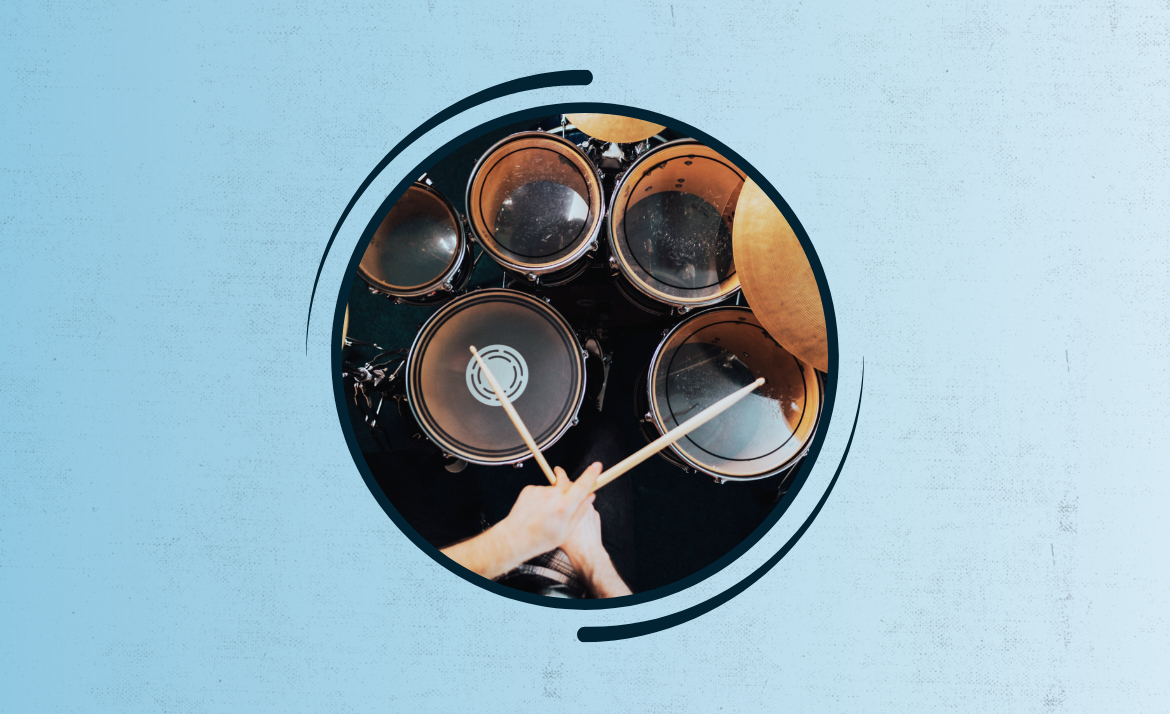Every drummer has felt that electric thrill when a perfectly timed accent lifts a song to new heights. Yet, it’s not luck—dynamics control is at the heart of that emotional impact.
By managing the force and subtlety behind each strike, dynamics control transforms a flat rhythm into a musical conversation. It’s what separates robotic grooves from captivating performances in any style of drumming.
Read on to discover how integrating intentional dynamics control into your practice can bring out the unique character of every note you play—tools and strategies await ahead.

Shape Emotional Arcs With Consistent Dynamics Choices
Building an expressive drum part begins by defining your intended emotional journey. Establishing clear dynamic levels for each section unlocks consistency and audience engagement.
Instead of randomly hitting softer or louder, assign specific volume goals to main song sections. For example, set verses at a moderate level and pour your energy into choruses for lift.
Create Contrast With Intentional Swells
Picture a movie soundtrack where suspense builds, then explodes—emulate that tension and release with swells. Gradually increase stick height and pressure through fills for a cinematic rise.
Try starting low with ghost notes and ramping up to loud accents. The audible crescendo keeps listeners on the edge of their seats, mimicking real emotional escalation.
Practicing swells with a metronome helps lock transitions in place—”crescendo over four counts, then drop on one” is an actionable process to start with.
Anchor Soft Passages For Impactful Transitions
Soft playing isn’t just about being quiet—it’s about adding mystery and space. Use a loose grip, letting sticks rebound with gentle wrist strokes during breakdowns or bridges.
Frame the change by signaling with a visible head nod or glance, letting bandmates and the audience sense the shift. The anticipation makes the next loud passage feel even bigger.
Soft dynamic moments, played intentionally, provide critical contrast—each one sets up the listener for surprise when the intensity returns. Drill these sections for control under pressure.
Comparing Dynamics Techniques For Drum Set
| Technique | Purpose | Setup Example | Try This |
|---|---|---|---|
| Ghost Notes | Add groove nuance | Light snare taps between main hits | Play alternating loud-soft snare patterns on a slow groove |
| Accents | Highlight phrases | Raise stick height only on certain beats | Emphasize the 2 and 4 in a backbeat with higher stick lift |
| Rimshots | Make hits pop | Strike rim and head together | End every 8 bars with a rimshot to surprise the listener |
| Swells | Build anticipation | Gradually louder rolls on cymbals | Roll quietly, then increase until the crash |
| Choked Cymbals | Add punctuation | Quickly grab cymbal after striking | Play a loud crash, then instantly mute to signal changes |
Apply Stick Technique Variations To Dial In Your Sound
Switching grip or changing stick angles can refine your dynamic range, giving more shades and emotion to every hit. Dial in the right motion for the musical moment you want to create.
The setup and approach from soft to loud should be a purposeful decision, never accidental. Try mixing traditional grip during quiet passages and matched grip for powerful sections.

Timing Techniques Every Drummer Needs to Lock In Every Beat
Uncover proven drills, real-world band tips, and mindful practice routines to keep your beat rock solid everywhere you play.Experiment With Grip To Unlock Control
Altering grip pressure allows more expressive playing. Use a looser hold for nimble, quiet textures, or grip tighter for bold, punchy hits. Notice how grip shift affects dynamic ease.
- Use loose grip for ghost notes—reduces hand fatigue and increases bounce control in soft grooves.
- Increase stick angle for accents—raising the stick height adds power without forcing arm tension.
- Try thumb pivot for soft ride cymbal patterns—lets wrists move naturally for flowing jazz or ballads.
- Switch to matched grip on fills—suits energetic flurries where speed and consistency matter most.
- Control rebound for rolls—let sticks work with the drumhead rather than fighting it, ensuring even dynamics across strokes.
By varying these elements intentionally, you’ll access new tones and inspire creativity within your grooves.
Phrasing For Emotional Impact
Structure each fill or phrase so one hit stands out as a rising “peak”. Play soft, medium, then loud to paint a miniature story within every bar.
- Start fills quietly, finish on a bold note—captures attention and resets the emotional tone for the next section.
- Accentuate only critical notes—forceful accents punctuate, while restraint leaves space for others to shine.
- Alternate soft and loud between hands—engages muscle memory and helps ideas flow without guessing loudness levels.
- Breathe before downbeats—short pause before a strong hit supports intentional phrasing and encourages confidence.
- Record and review—listening back demonstrates how phrasing clarity affects the mood and feel of an entire song.
Purposeful phrasing builds engaging performances that connect you and your audience through every dynamic change.
Drum Kit Tuning And Setup That Supports Clear Dynamic Response
A drum’s sensitivity is shaped by head type, tension, and overall kit setup. Pick the right combination so your dynamic playing speaks clearly at all volumes, from the lightest whisper to the heaviest slam.
Proper tuning ensures low-level notes are audible, while high-tension settings help loud hits cut through in dense arrangements. Adjust your kit for dynamics control, not just volume.

Choose Responsive Heads For Expressive Playing
Single-ply batter heads “open up” at low volumes. They react smoothly to ghost notes and detailed articulation, helping conserve energy while delivering expressive dynamics on snare or toms.
Coated heads provide a dry, textured sound—ideal for sensitive brushes or jazz. Clear heads offer pronounced attack and stick definition, making dynamic contrasts more dramatic in rock or pop settings.
Experiment with batter and resonant head combinations to suit your desired range and style. Listening critically to each adjustment is key—trust your ears to guide final tweaks for dynamics control.
Optimize Snare And Cymbal Placement For Clean Articulation
Positioning your snare lower or closer enables relaxed wrists, reducing tension and giving sensitive control over volume. Keep frequently-used cymbals within easy reach to avoid overexertion during fast dynamic changes.
Place cymbals at shoulder height or slightly lower. This positioning ensures you strike with the best angle for controlled swells and choked accents, reducing awkward movements and potential stick drops during expressive playing.
Fine-tune each component’s distance and angle by playing soft-to-loud patterns, noting which setup lets every note come through naturally. Adjust until fast dynamic shifts feel effortless.
Express Yourself With Every Hit Using Intentional Dynamics
Purposeful dynamics control shapes emotional listening experiences and lifts every groove from the mundane to the memorable. Implementing these techniques brings new energy, freedom, and storytelling power to your drumming every time you play.
Attentive stick technique, tuned kit choices, and detailed phrasing let you translate the emotion inside directly into each note. The result: your performances breathe, move, and grab listeners from the first beat to the last.
Drummers who embrace intentional dynamics control have more tools for self-expression and connection. Small changes in touch and volume can inspire a room, motivate bandmates, and turn ordinary beats into heartfelt musical moments.



